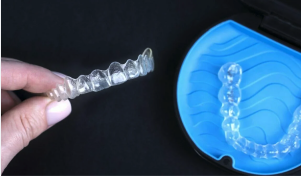Categories
There is no getting away from the fact that dental veneers are proven to significantly improve the appearance of your teeth and boost your confidence in your smile as a result. Veneers are custom selected too to ensure they match the existing color of your teeth. However, if you want to improve your teeth coloring, we recommend doing this first before you go ahead with veneers as the first logical step of your smile makeover.
Here at Ollie & Darsh, we offer a comprehensive consultation process where we will identify the best cosmetic treatment for smile and teeth imperfections. Whilst dental veneers are a fantastic choice in many cases, they aren’t right for everyone. If imperfections are minor but still need sorting without committing to long-term treatments, composite bonding may also be considered.
Veneers placed and fitted correctly can last up to 10-15 years. There aren’t any special care requirements beyond the regular oral care of brushing, flossing, and regular dentist visits.
Veneers are extremely durable. When they’re bonded to your teeth they become as strong as your normal teeth.
Usually, veneers are applied to your teeth using dental bonding glue. Once attached they become very strong. A light is then used to make the glue harden quickly.
Before leaving your appointment, your bite will be assessed to make sure everything is attached correctly.
The length of time gummy smile correction takes depends on the number of teeth involved, but it generally lasts for around 15 to 45 minutes.
No. We always perform gum contouring treatment using local anaesthetic, so you shouldn’t feel a thing. Your gums will be fully healed within two weeks, but you shouldn’t experience much swelling after your procedure.
Dental implants are a modern method of replacing damaged or lost teeth and provide a healthy, natural-looking smile. The implant is a metal post, usually made of titanium, which supports dental prosthesis such as crowns, bridges and dentures. The implant, which is placed into the jawbone, can replace the root of a tooth when it fails.
Crowns are often fitted to teeth that are heavily filled, chipped or broken and are usually made of porcelain. A tooth-shaped cap (the ‘crown’) is placed over the damaged tooth and cemented in place, restoring the appearance and functionality of a damaged tooth. Where a tooth is lost, an implant can be fitted and a crown is attached to this.
Bridges quite literally ‘bridge the gap’ between missing teeth. A bridge is made up of two anchor teeth, which can be healthy teeth or two crowns held in place by dental implants, with a false tooth or teeth filling the gap between. A bridge can not only improve the appearance of your smile, but they can also reduce the increased stress that is present on other teeth, when you have a gap.
The titanium post part of a dental implant works much the same as the root of a missing tooth once did. Once implanted, the jawbone becomes stimulated, and the bone fuses with the implant. This process takes time, typically around 2-3 months, by which time an individually designed crown can then be attached.
All-On-4® Implants are usually used when a client has lost all of their teeth, through age, decay or an accident. They are also used to replace teeth that have been failing over a period of time and for clients who cannot tolerate dentures.
